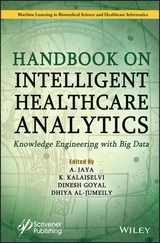2. Others and Borghini, G., Aricò, P., Di Flumeri, G., Cartocci, G., Colosimo, A., Bonelli, S., Golfetti, A., Imbert, J.P., Granger, G., Benhacene, R., EEG-based cognitive control behaviour assessment: an ecological study with professional air traffic controllers. Sci. Rep ., 7, 1, 1–16, 2017.
3. Wang, S., Gwizdka, J., Chaovalitwongse, W.A., Using wireless EEG signals to assess memory workload in the $ n $-back task. IEEE Trans. Hum-Mach Syst ., 46, 3, 424–435, 2015.
4. Zhong, Y. and Zhang, J., Identification of temporal variations in mental workload using locallylinear-embedding-based EEG feature reduction and support-vector-machine-based clustering and classification techniques. Comput. Methods Programs Biomed ., 115, 3, 119–134, 2014.
5. Li, X., Chen, Z., Liang, Q., Yang, Y., Analysis of mental stress recognition and rating based on hidden Markov model. J. Comput. Inf. Syst ., 10, 18, 7911–7919, 2014.
6. Penaranda, B.N. and Baldwin, C.L., Temporal factors of eeg and artificial neural network classifiers of mental workload, in: Proceedings of the Human Factors and Ergonomics Society Annual Meeting , pp. 188–192, 2012.
7. Palinko, O., Kun, A.L., Shyrokov, A., Heeman, P., Estimating cognitive load using remote eye tracking in a driving simulator, in: Proceedings of the 2010 symposium on eye-tracking research \& applications , pp. 141–144, 2010.
8. Krejtz, K., Duchowski, A.T., Niedzielska, A., Biele, C., Krejtz, I., Eye tracking cognitive load using pupil diameter and microsaccades with fixed gaze. PLoS One , 13, 9, 1–23, 2018.
1 *Corresponding author: rndas9@gmail.com
2
Artificial Neural Networks in DNA Computing and Implementation of DNA Logic Gates
Mandrita Mondal1* and Kumar S. Ray2
1Electronics and Communication Sciences Unit, Indian Statistical Institute, Kolkata, India
2Computer Engineering and Applications, GLA University, Mathura, India
Abstract
The activity of the brain resembles the computer as it functions as an input-output device. Artificial neural network (ANN) can be defined as the computing system developed for simulation of human nervous system. It consists of huge number of vastly interconnected processing units, termed as neurons. ANN is one of the most successfully implemented tools in the domain of machine learning. In this chapter, we discuss the development of ANN using short DNA strands, i.e., oligonucleotides. The short sequences of DNA molecules can be used to code input and output signal and to build the basic architecture of the neuron. We also illustrate the design methodology of DNA logic gates and DNA logic circuits which are the basic of Boolean algebra. Because of few drawbacks, viz ., immense energy consumption, vast memory requirement, and heat dissipation, the traditional computation is approaching toward the limitations of its processing power and design strategy. The unique property of DNA molecules to store, process, and retrieve information motivates the notion of this unconventional computation, DNA computing. Our aim is the paradigm shift in computational world; from silicon to carbon. The design strategies discussed in this chapter are essential for effective development of DNA computer practically.
Keywords:Artificial neural networks, DNA logic gates, DNA logic circuits, perceptrons, DNA computing, deoxyribozyme, strand displacement
Artificial neural network (ANN) is one of the most successfully implemented tools in the domain of machine learning. As the name suggests, ANN mimics human nervous system. The nervous system is the most versatile and complicated accomplishment of human evolution. It receives sensation, generates the responses, and affects cognitive functioning, learning, and behavior of an individual. ANN can be compared to interconnected neurons like human neurons which are capable of passing information from one neuron to other. These connections are called synapses to which numeric weights are associated. These synaptic weights can be set depending on learning both from past experience and current situation.
Neural networks or percetrons have been cultivated since 1940s and it has become a competent domain of artificial intelligence. It consists of input layer, hidden layer, and output layer. The hidden layer is consists of one or more layers depending on the complexity of the problem. The units of hidden layer transform the input into something that the output layer can use. Neural networks are used as efficient tools to generate complex patterns which are quiet impossible for a human programmer to extract and teach the machine to recognize. ANN has several computational applications, such as speech recognition, pattern classification, machine diagnostics, target recognition, process modeling and control, and medical diagnosis.
The intention of this chapter is to theoretically build the backbone of DNA computer. DNA molecules are competent to store, process, and retrieve information which motivates the notion of DNA computing. In this chapter, we focus to replace the mathematical and logical aspect of artificial intelligence by the unique chemical properties and characteristics of DNA molecules. DNA computing is the emerging domain in computational world and the modern technology is gradually approaching toward the paradigm shift, from silicon to carbon, where DNA computing is overcoming the drawbacks of classical silicon-based computing. We demonstrate the use of DNA oligonucleotides to develop the models of ANN. The input and output signal, which constructs the basic architecture of the neuron, has been encoded in terms of short DNA sequences.
The activity of the brain resembles the computer as it functions as an input-output device. The basic design of digital computer follows Boolean algebra. Thus, there is a sheer possibility of the brain to use Boolean algebra. As the input and output of the neural model are binary numbers, thus the multi-layer neural network can implement the basic logic gates, i.e., AND, OR, and NOT. This can be achieved by appropriately choosing the weights. In this chapter, we illustrate the design strategy of logical gates using the secondary structures of DNA molecules. DNA logic circuits, which are the alternatives to complex Boolean circuits, can be developed by the suitable use of DNA oligonucleotides and various enzymes. These DNA logic gates and logic circuits can be the pillars of a competent DNA computer in near future.
We also demonstrate the applications of DNA logic gates in real life. The successful development of DNA logic circuits accomplishes the basic requirement to design nano-DNA-devices. In the forthcoming generation, these nano-machines can be implanted in living organisms so that it could sense the conditions and accordingly can make decisions and respond to the situation. Based on the sensed circumstances, the nano-devices would be able to take required actions, for example, releasing medicines and killing hazardous cells.
In Section 2.2of this chapter, we give a brief overview of biological neurons which is crucial to build the concept of ANN. Section 2.3focuses on the short description of ANN which has been illustrated as the mathematical and computational tool for nonlinear statistical data modeling. DNA neural network is demonstrated in Section 2.4. Section 2.5contains the developments on DNA logic gates, DNA logic circuits, and their applications. Finally, Section 2.6concludes this chapter by focusing on the advent of DNA-based artificial intelligence.
The basic component of nervous system is the specialized cells called neuron. It is actually an information processing unit which is responsible for receiving and transmitting information. About a hundred billion neurons are connected to thousands of its neighbor neurons and through these interactions the communication of information occurs throughout the body. Because of the enormous interactions between the neurons and their parallel processing which controls organized brain functions, the network is termed as neural network. Figure 2.1presents the schematic diagram of biological neuron.
Читать дальше












